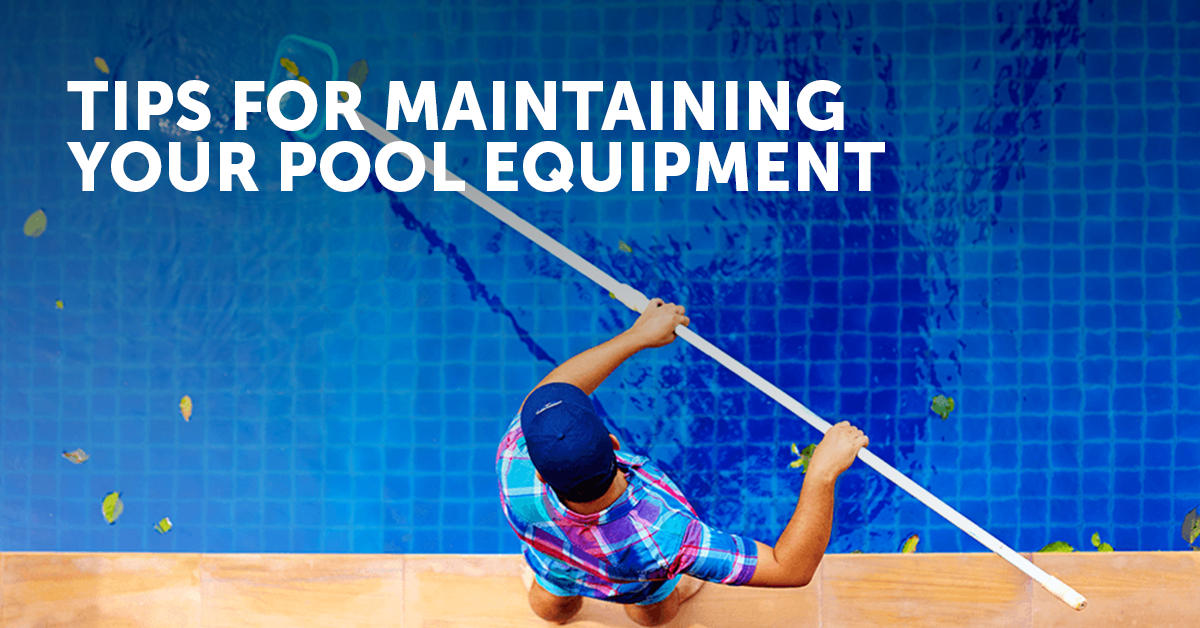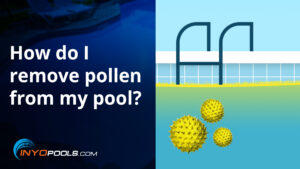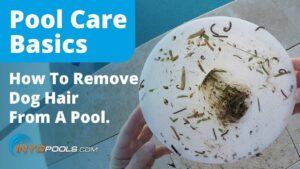When asked, members of our Facebook Group, Pool People, suggested that we release more content on tips for maintaining your pool equipment. Sure, most pool owners pay attention to their water chemistry (we hope). However, we rarely hear about maintenance routines for the equipment.
As you know, some pieces of equipment are more expensive than others. It is important to protect and maintain your equipment so that you maximize your $avings.
Maintaining Your Pool Pump
As the heart of your swimming pool, it is important to maintain your pool pump properly. A swimming pool without a working pump is a green pool waiting to happen. Keeping maintenance schedules will help you avoid spending unnecessary dollars.
Seals, O-rings, and Gaskets
Tips:
- Inspect your pump seals (shaft seal, lid gasket, body O-ring, etc.) once a week. Replace if necessary.
- When it’s time to change your seals, make sure you install them correctly.
- Replace your shaft seal whenever you replace your motor
The seals, O-rings, and gaskets, although small, play a large role in maintaining your pool pump. The shaft seal, in particular, plays an important role as it protects the motor from water damage. As the shaft seal deteriorates, water can seep through to the motor and damage it. This can be a costly leak. Additionally, a faulty lid O-ring or housing gasket can cause a pile of other issues in your pool.
In most cases, pool owners will start to hear screeching or squealing noises coming from the motor. This is an early indication that water is getting to your motor and you need to replace your shaft seal. If you are opening up your pump and replacing your shaft seal, use it as an opportunity to inspect and replace your other gaskets and O-rings. You can also inspect other parts such as your impeller and diffuser.
Resources for Your Pump
Why Should I Change My Shaft Seal (Blog)
How to Replace Your Pump Gaskets (How-To Guide & Video)
How to Replace Your Pump Seal (How-To Guide & Video)
Maintaining Your Pool Filter
Even with a working pump, a pool without a working filter (or a dirty one) is a recipe for a green pool. Whether you are using a sand, cartridge, or D.E. filter, there are maintenance routines you can perform that will ensure longevity for your equipment AND help clean your water.
Cleaning Your Filter System
Tips:
- Ensure your pressure gauge is working properly.
- Monitor your pressure levels on your filter to establish a cleaning schedule.
- Create a weekly or bi-weekly cleaning schedule for your grids/cartridges.
Regardless of the filter you have, one of the most important components on the filter is the pressure gauge. The pressure gauge indicates when you will need to backwash your sand or D.E. filter or when it’s time to clean or replace your filter cartridges. A general rule is to backwash or clean your cartridges when the PSI on the gauge is 8-10 higher than normal.
A good tip is to write down and familiarize yourself with the pressure reading when your pool is in pristine shape. This is how you can determine when your filter is dirty and it’s time to backwash or clean the cartridges.
Resources For Your Filter
How and When to Clean a Cartridge Filter (How-To Guide & Video)
How and When to Backwash a Sand Filter (How-To Guide & Video)
How and When to Backwash a D.E. Filter (How-To Guide & Video)
Protecting Your Equipment From Salt
Do you own a salt system? If so, this section is specifically for you. We all know that salt causes metals to deteriorate at a faster rate than chlorine. But, how can you protect your pool equipment from rusting and going bad?
Making Your Pool Salt-friendly
Tips:
- Use the optional heavy-duty shaft seal on your pump
- Purchase a heater that has a cupro-nickel heat exchanger
- Install sacrificial anodes
- Oversize your salt system
Manufacturers are beginning to understand the popularity of salt systems in residential swimming pools. As a result, manufacturers have made attempts to create products that could withstand the harshness of salt. For example, pool pumps and heaters now have salt-friendly options.
For pumps, you want to purchase a heavy-duty shaft seal. You will have to purchase this seal separately, but you can easily find it online or at a local pool shop.
For heaters, if you have or are planning on installing a salt system in your pool, we recommend purchasing a cupro-nickel version. This option comes with a cupro-nickel heat exchanger, which holds better in salt than titanium. It’s actually beneficial for poorly balanced pools, too.
Sacrificial anodes, or zinc anodes, combat the corrosion of other critical metals in your pool. For example, if you install an anode to the metal you’re trying to protect, the corrosion caused by the salt will attack the anode first. Pool owners can use these in conjunction with pool lights, returns, above ground pool railings, ladders, steps, and heater parts.
Resources For Your Salt System
Converting Your Pool to Saltwater (Blog)
Should I Use a Heavy Duty Shaft Seal? (Video)
Zinc Anodes (Blog)
Sizing Your Pool Equipment (Correctly)
Incorrectly sizing your pool equipment can have dire effects on your pool’s overall health. This makes it extremely important to take special precaution when purchasing new equipment. However, in many cases, pool owners inherit the pool equipment with the house and assume it is correct.
Tips
- When you move into a house with a pool, verify the sizes of your pool equipment
- Oversize all of your pool equipment EXCEPT your pool pump/motor.
As a pool owner, you have a responsibility to size your pool equipment properly. In the long run, this will benefit you, your pocket, and your pool’s overall health. If you move into a new house with a pool, take the time to familiarize yourself with the pool equipment.
A properly sized pump ensures that it is powerful enough to push the water through your filtering system but not too large as to consume unnecessary energy. This is the one piece of equipment we never recommend oversizing.
On the other hand, when you size your filter, you are ensuring that the filter is big enough to clean your pool. If your filter is too small, you will consistently fight a green pool. In this case, oversizing isn’t a problem. In fact, it’s beneficial. A bigger filter means less cleaning, fewer replacements, and less maintenance.
Resources For Sizing Your Pool Equipment
Sizing Your Pool Pump (Blog & Video)
Sizing Your Pool Filter (Blog + Video)
Sizing Your Salt System (Blog)
Balancing Your Pool Water
Did you know that one of the leading causes of pool equipment failure is due to poor water chemistry? If there is one thing I think every pool owner should be comfortable doing is testing, balancing, and maintaining the proper chemical levels for the pool.
Tips
- Develop a regular cleaning routine to test and balance your pool
- Purchase a reliable at-home test kit
- Consider upgrading to an automation system
One thing I’ve learned working here is that every pool scenario is different. Pool owners who live in different cities encounter different sets of variables. That is why it is important to familiarize yourself with basic pool chemistry.
Pool owners should regularly test for chlorine, pH, total alkalinity, calcium hardness, and salt (if applicable). How often should you test your pool water? For new pool owners, we recommend getting in the habit of testing your pool water every day (every other day if that isn’t realistic for you). In some cases, pool owners can find themselves testing multiple times a day. It will also vary during higher bather loads and during different seasons.
Still, the more you test and balance your pool, the healthier it should be.
Resources for Balancing Your Pool
How to Clean a Green Pool (Video & Blog)
How to Balance Your Pool Water (Blog)
Water Chemistry for Saltwater Pools (Blog)
Above Ground Pools
The price of above ground pools alone should be enough to motivate any new pool owner to maintain it. In addition to the pool equipment, above ground pools also contain many parts. Thus, making it easier for pool owners to lose and/or break parts.
Tips
- Consider the type of pool that is best for your needs and setup (steel vs. resin v. hybrid)
- Write down the make and model of your pool and store it in a safe place
- Properly winterizing your pool during the winter
- Test and balance your pool daily
- Inspect pool equipment
Above ground pool parts are very specific, making it one of the biggest drawbacks to replacing. Similar to automobiles, you need the exact make and model of the pool before you can find the correct replacement part. Sometimes, this makes it difficult for pool owners to replace parts on older model pools or pools they had purchased or inherited second- hand. If you are purchasing a second-hand pool, verify that the seller has all of the original parts and paperwork.
Additionally, in terms of water chemistry and equipment maintenance, the processes are the same as inground pools. It is important that you routinely test and balance your pool water, maintain your pool equipment, and to size your equipment properly.
Resources for Above Ground Pools












Leave a Reply